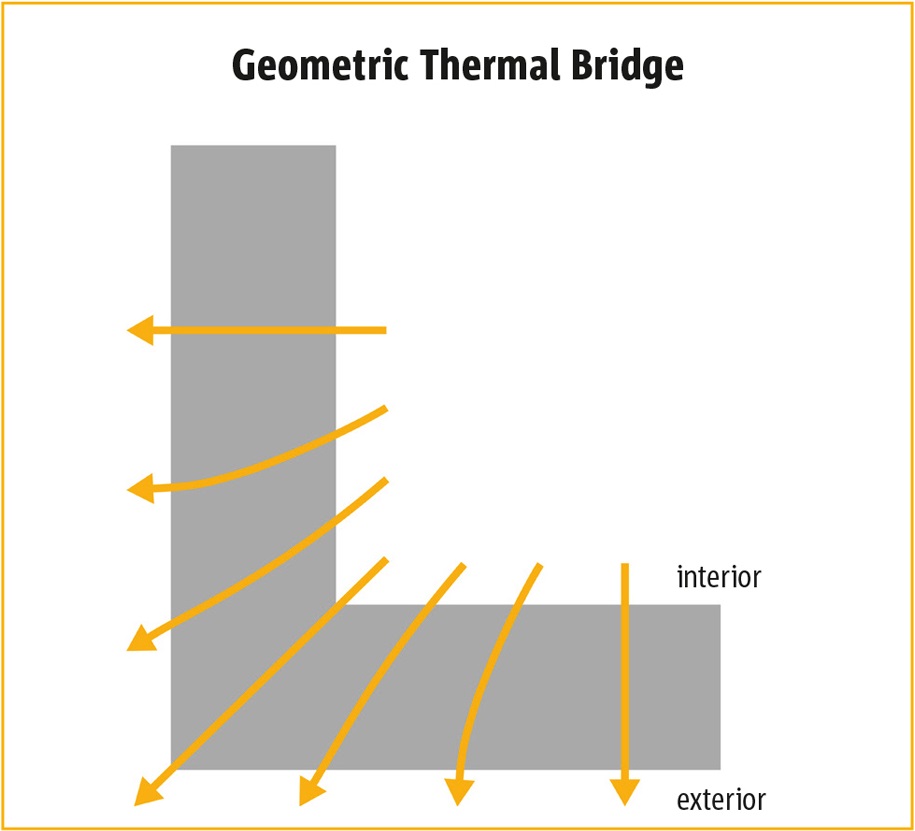The causes of thermal bridging
Thermal bridges are localized areas of low thermal resistance. The rate of heat flow though a thermal bridge depends on a number of factors:
- The temperature difference across the thermal bridge
- The thermal conductivity of the materials passing through the insulation layer
- The cross sectional area of the thermal bridge
- How easily heat can get into and out of the thermal bridge which, in turn, depends on:
- The relative area and surface resistance of the surfaces of the thermal bridge facing the source of heat and those facing the heat sink
- The lateral heat flow paths in the assembly that can bring heat to and from the thermal bridge
It is simple to say that "heat flow takes the easiest path," but it is sometimes very difficult to analyze what those three-dimensional paths are, how much heat flows through them, and what actually happens when you block one path. In fact, this analysis was almost impossible before the availability of 2D and 3D computer models. The recognition of how significant thermal bridges can be – and what the best ways to mitigate them are – has grown in direct relation to the availability of such tools. One still needs to understand the basic principles of heat flow through thermal bridges in order to effectively mitigate them.
Material Thermal Bridges
The most obvious kind of thermal bridge occurs when a thermally conductive element passes through an insulating layer. A typical example would be anchor bolts penetrating a layer of insulation, see Figure 3. These steel anchor bolts allow more heat flow than the surrounding insulation. Structural thermal bridges such as this are described in more detail in the next section.
Geometric Thermal Bridges
Another kind of thermal bridge depends on geometry, rather than on materials with different conductivities. Geometric thermal bridges can occur when the heat-emitting surface is larger than the heat absorbing surface. Building corners are a typical example, see Figure 4. Interior surfaces in the corner can be colder than other interior surfaces because more heat can flow due to the larger emitting surfaces.

Figure 3: Cross-section through two materials, shows dark grey with high conductivity (steel) and grey with medium conductivity (concrete). The direction of heat flow is shown by the arrows. The heat flows from the warm room (bottom edge of the image) to the colder area (top edge of the image) through the material.


